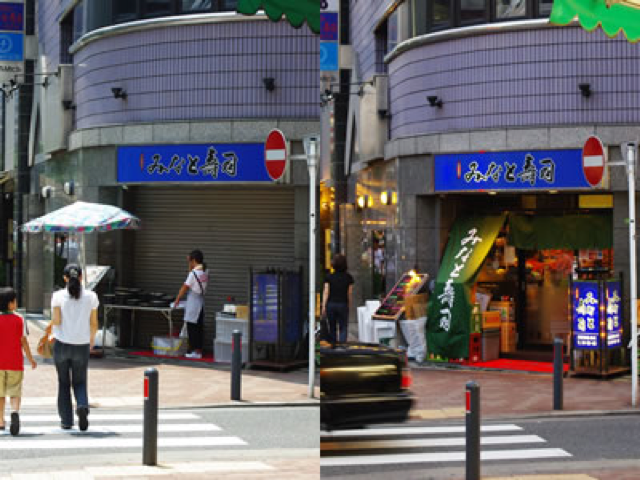One day at lunchtime I noticed a woman selling lunch boxes in front of a sushi bar. Her lunch boxes are conventional bentos with fried chickens, not sushi. The sushi bar owner may not be aware of the fact that the small pool in front of his restaurant is regularly occupied by street vendors like this woman, who serves to different clientele in different time slot.
Here is Kannai, the historical portside area in Yokohama bustling with business, entertainment, and tourism. Around 5 p.m. the sushi-bar starts serving their dishes and drinks for businesspeople who finish their today’s work. Around 9 p.m. the doormen of Kyabacula nightclubs start strolling around. When raining the sushi bar’s awning serves as their rain shelter. Around midnight, businesspeople are all gone; instead there are many nightclub hostesses who enjoy free dinner offered by their accompanying male patrons.
Many, often conflicting activities prompt people to alter existing urban structure and to collectively create multilayered spaces. Small voids in both space and time often invite creative use by ordinary people. City planners and urban architects may not appreciate the fried chicken bentos, but the neighborhood has a vibrant, cozy atmosphere that design-oriented large urban projects can hardly achieve.
by Kunikazu Amagasa (Photograph by himself)
